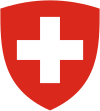Federal elections were held in Switzerland on 28 October 1928. Although the Social Democratic Party received the most votes, the Free Democratic Party remained the largest party in the National Council, winning 58 of the 198 seats.
Federal elections were held in Switzerland on 25 October 1931. Although the Social Democratic Party received the most votes, the Free Democratic Party remained the largest party in the National Council, winning 52 of the 187 seats.
Federal elections were held in Switzerland on 25 October 1959. The Social Democratic Party and the Free Democratic Party emerged as the largest parties in the National Council, each winning 51 of the 196 seats.
Federal elections were held in Switzerland on 28 October 1951. Although the Social Democratic Party received the most votes, the Free Democratic Party remained the largest party in the National Council, winning 51 of the 196 seats.
Federal elections were held in Switzerland on 26 October 1947. Although the Social Democratic Party received the most votes, the Free Democratic Party emerged as the largest party in the National Council, winning 52 of the 194 seats.

Federal elections were held in Switzerland on 26 October 1851. The Radical Left remained the largest group in the National Council, winning 78 of the 120 seats.

Federal elections were held in Switzerland on 29 October 1854. The Radical Left remained the largest group in the National Council, winning 80 of the 120 seats.

Federal elections were held in Switzerland on 28 October 1857. The Radical Left remained the largest group in the National Council, winning 80 of the 120 seats.

Federal elections were held in Switzerland on 28 October 1860. Despite large losses, the Radical Left remained the largest group in the National Council, winning 64 of the 120 seats.

Federal elections were held in Switzerland on 25 October 1863. The Radical Left remained the largest group in the National Council, but lost its majority for the first time since 1848.

Federal elections were held in Switzerland on 28 October 1866. The Radical Left remained the largest group in the National Council.

Federal elections were held in Switzerland on 31 October 1869. The Radical Left remained the largest group in the National Council.

Federal elections were held in Switzerland on 27 October 1872. The Radical Left remained the largest group in the National Council.

Federal elections were held in Switzerland on 26 October 1884. The Radical Left retained its majority in the National Council.

Federal elections were held in Switzerland on 26 October 1890. The Radical Left narrowly retained its majority in the National Council.

Federal elections were held in Switzerland on 29 October 1893. The Radical Left narrowly retained its majority in the National Council.

Federal elections were held in Switzerland on 25 October 1896. The Free Democratic Party retained its majority in the National Council.

Federal elections were held in Switzerland on 26 October 1899. The Free Democratic Party retained its majority in the National Council.

Federal elections were held in Switzerland on 29 October 1905. The Free Democratic Party retained its majority in the National Council.

Federal elections were held in Switzerland on 28 October 1917. The Free Democratic Party retained its majority in the National Council. They were the last elections held under the majoritarian system; following a referendum in 1918 in which two-thirds of voters voted for the introduction of proportional representation, the electoral system was changed and early elections held in 1919.









